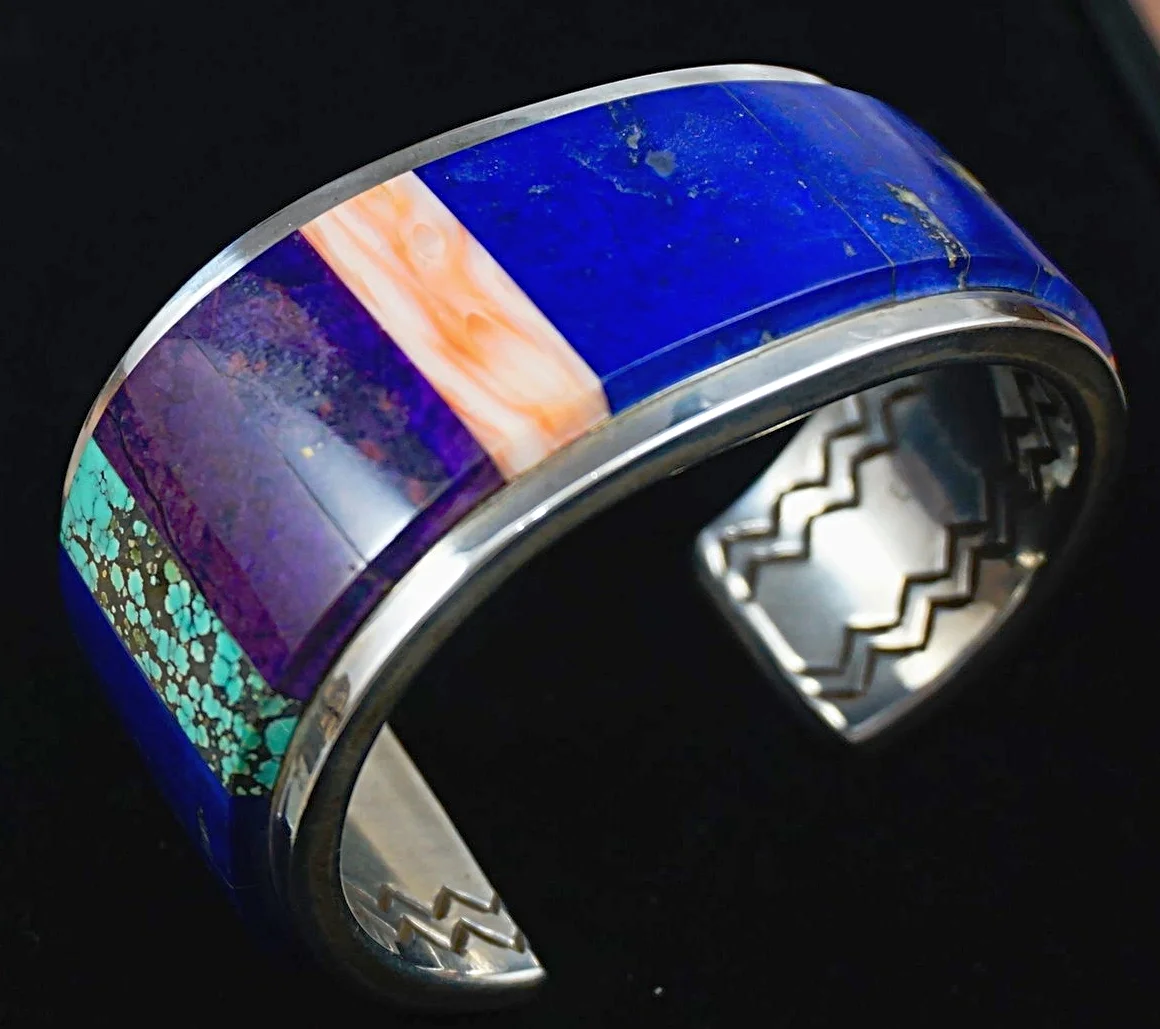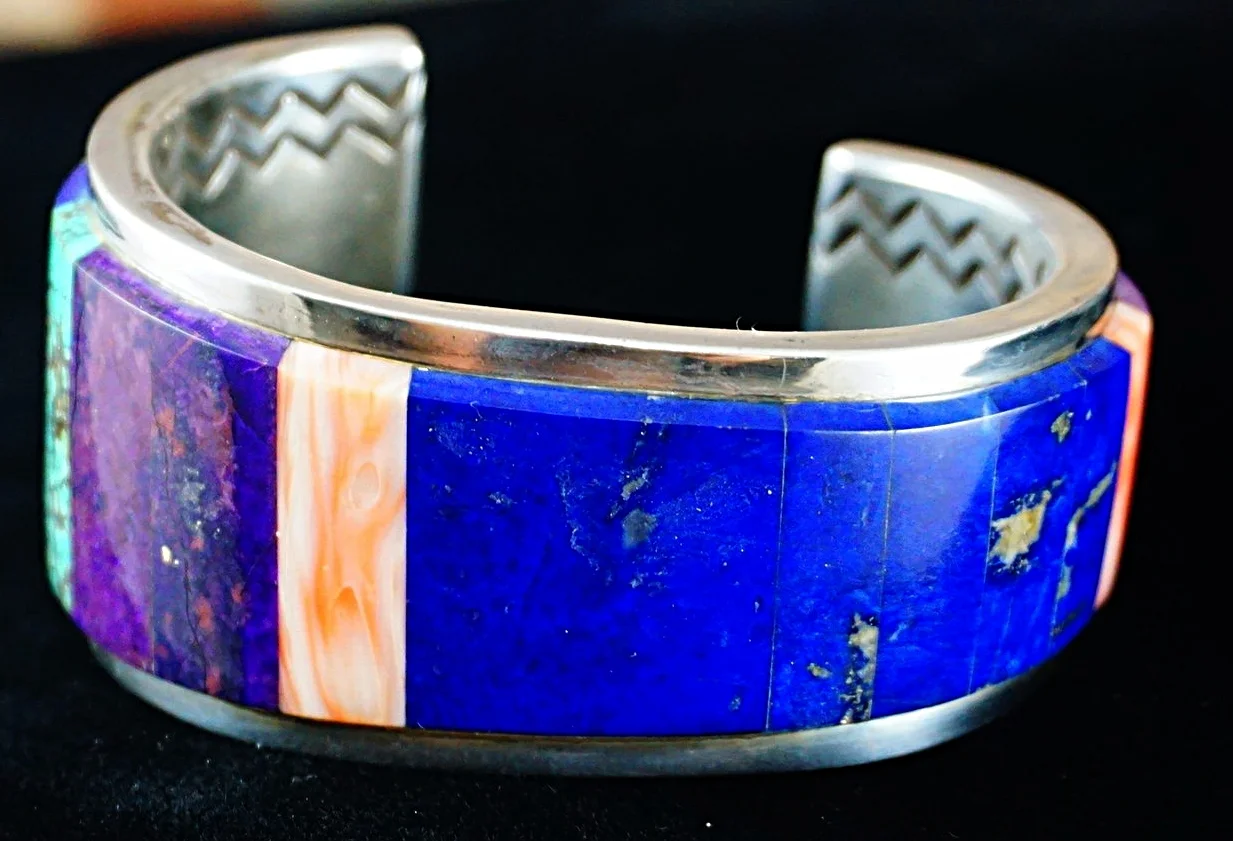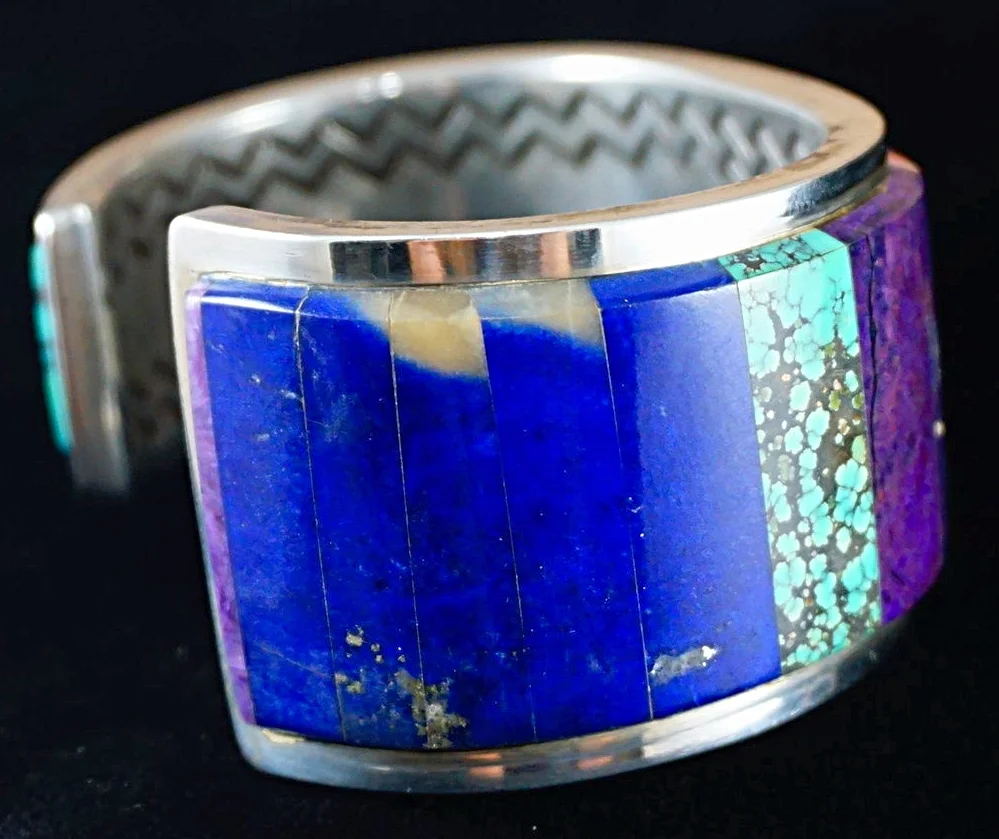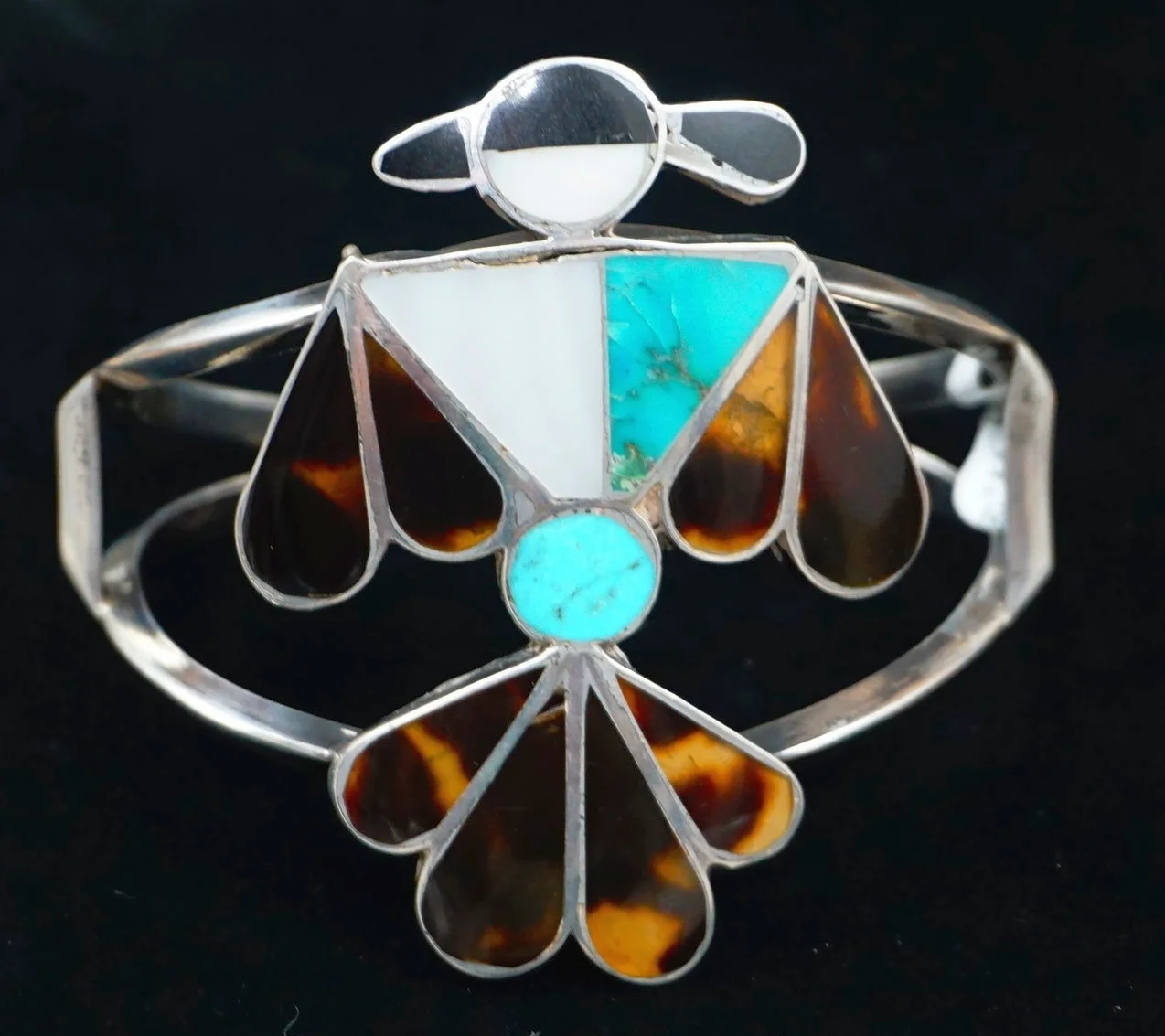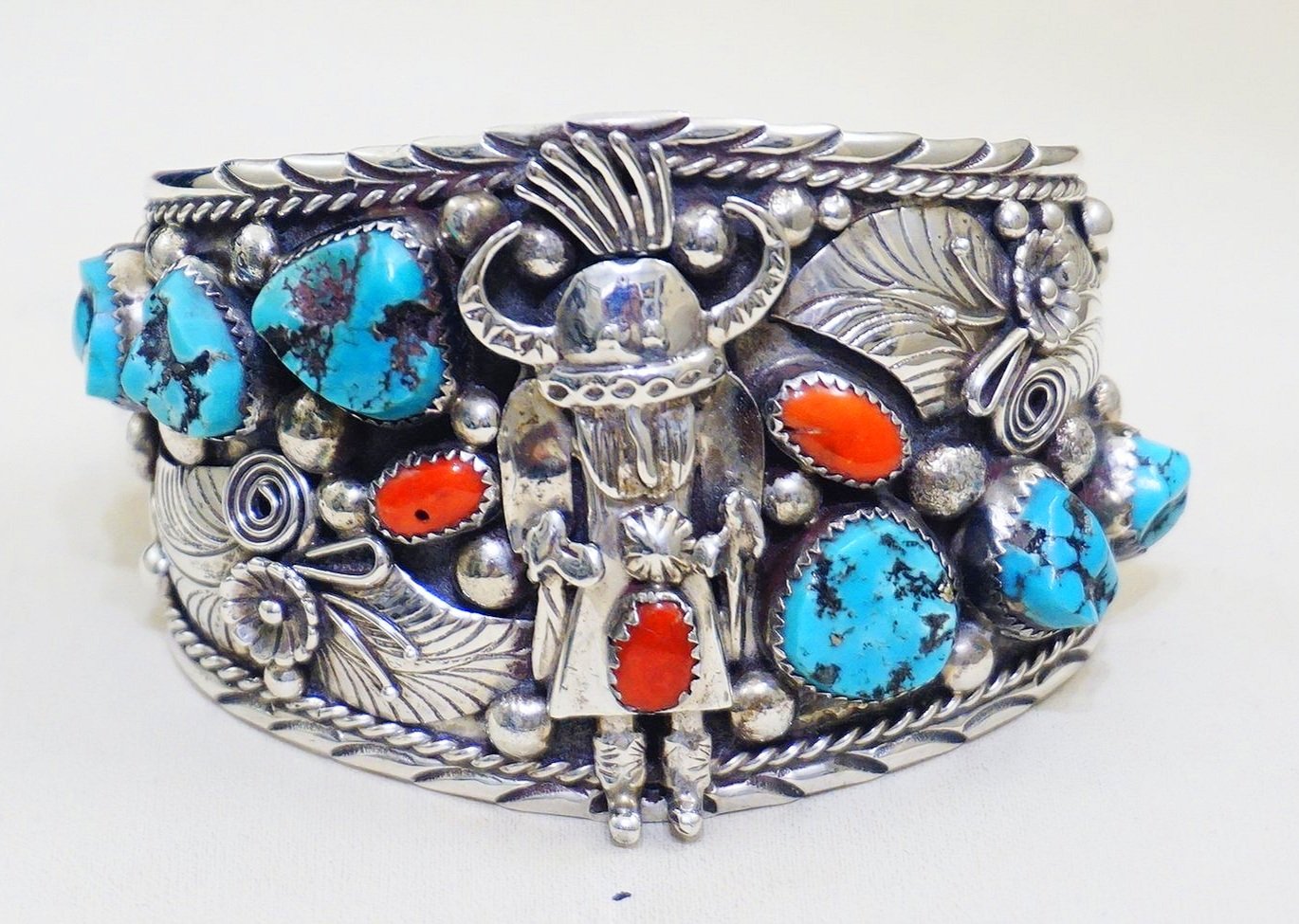Item # 745R - Heavy Navajo Multistone Inlay Inner Stamped Collector's Bracelet by H.TOLEDO
Item # 745R - Heavy Navajo Multistone Inlay Inner Stamped Collector's Bracelet by H.TOLEDO
Beautiful heavy very well made Navajo multi stone raised inlay inner stamped bracelet. The artist uses very thick and heavy gauge silver starting wide at one end and tappering down smaller to the other end. He has used twenty (20) pieces of different stones to create the inset run around the outer cuff. Stones use include two (2) types of blue spiderweb turquoise, green spiderweb turquoise, orange-white spiny oyster shell, deep blue lapis lazuli, purple sugalite, and one thin strip of charoite on the very end of one side. The artist has cut the stones so precise that it's hard to see where one stone stops and the other starts. All mounted to a 3/8" thick silver cuff. The artist has also included double zig-zag stampwork on each side that runs the length of the inside of cuff. This bracelet comes out of our personal collection. It just sets inside our vault and figure workmanship like this should be shown off.
The bracelet measures 1 3/8" wide at one end tappering down to 7/8" at the opposite end. As we stated above the cuff without the stones measures 3/8" thick. Including the stones it's over 1/4" thick. The bracelet's inner circumference is 5 3/8" with a 1 1/16" opening. It will fit a wrist between 6 1/4" to 6 3/8". It weighs a hefty 119.5 grams (4.21 ounces or 3.84 troy ounces) and is stamped H.TOLEDO - STERLING by Navajo artist Herbert Toledo. Very solid and perfectly handmade piece of collectable wearable Navajo art! $989.95
Zuni jewelry-making dates back to Ancestral Pueblo prehistory. Early Zuni lapidaries used stone and antler tools, wooden drills with flake stone, or cactus spine drill bits, as well as abrading tools made of wood and stone, sand for smoothing, and fiber cords for stringing.The establishment of the railroad, with the accompanying tourist trade and the advent of trading posts, heavily influenced Zuni and other Southwest tribes' jewelry manufacturing techniques and materials. In the early 20th century, trader C.G. Wallace influenced the direction of Zuni silver and lapidary work to appeal to a non-Native audience. Wallace was aided by the proliferation of the automobile and interstate highways such as Route 66 and I-40, and promotion of tourism in Gallup and Zuni. Wallace employed local Zuni people as clerks, jewelry makers, and miners. He provided tools, equipment, and silversmithing supplies to the jewelers with whom he did business. Wallace influenced Zuni art by encouraging the use of specific materials that sold well at his posts - such as coral - and discouraging others such as tortoise shell. Today, many tribal artisans from different tribes use some form of lapidary in their creations.
The earliest known lapidary work likely occurred during the Stone Age. As men created tools from stone, they inevitably realized that some geological materials were harder than others. The next earliest documented examples of what one may consider to be "lapidary arts" came in the form of drilling stone and rock. The earliest known examples of drilling date back approximately 1,000,000 years ago, 1,500,000 years after the Stone Age. The early Egyptians subsequently developed techniques for cutting and polishing stones as hard as quartz. (wikipedia)


